SikhiToTheMax Help
v1.6 Updates
This video is an quick overview of the new features on v1.6 of the Sikhitothemax app. Please look through these to learn about updates to various sections and exciting new features that make this version much easier to use.
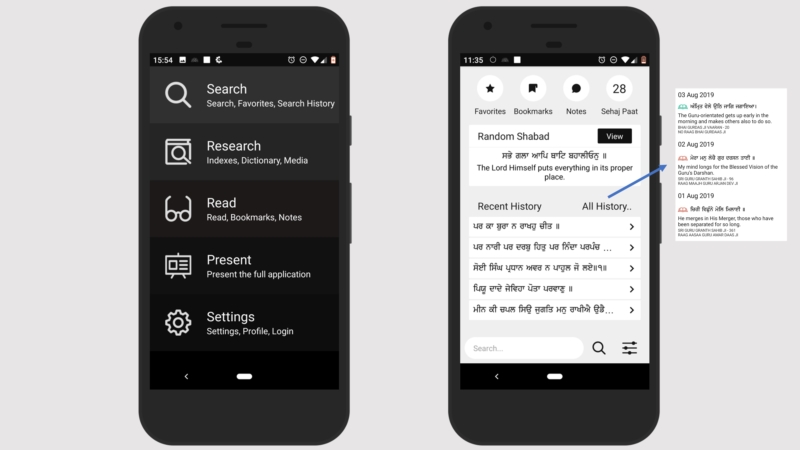
Startup Screens
Open the SikhiToTheMax app on the full menu screen or on the Search Screen. By default the application will open on the Search screen which has now been updated to included shortcuts, the Random Shabad feature and a view of latest history with link to view all of your history.
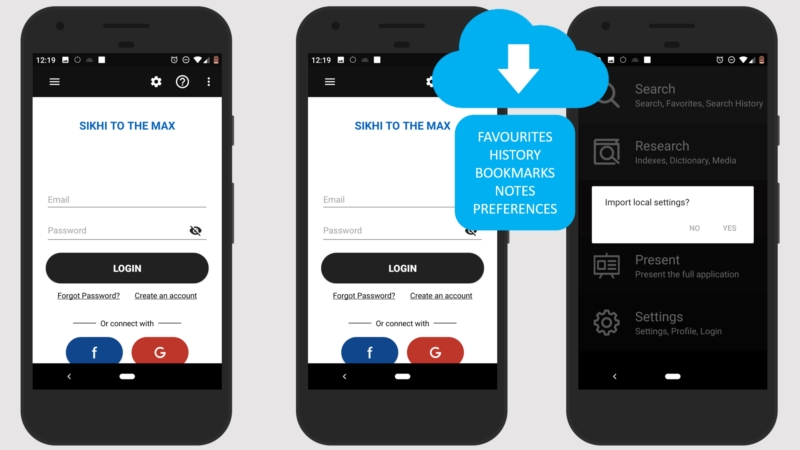
Login To Save Settings
Use the login feature to save you settings. You can use the Facebook, Gmail or regular login which will keep your settings for your history, favourites, bookmarks and notes, colour settings and you Sehaj Paat details.
If you have been using the application without logging in, when you do login, you will get prompted to save your local settings to your profile. If you say yes, it will save the local settings that you have used in the application (like favourites, colour selections for fonts etc) to your profile.
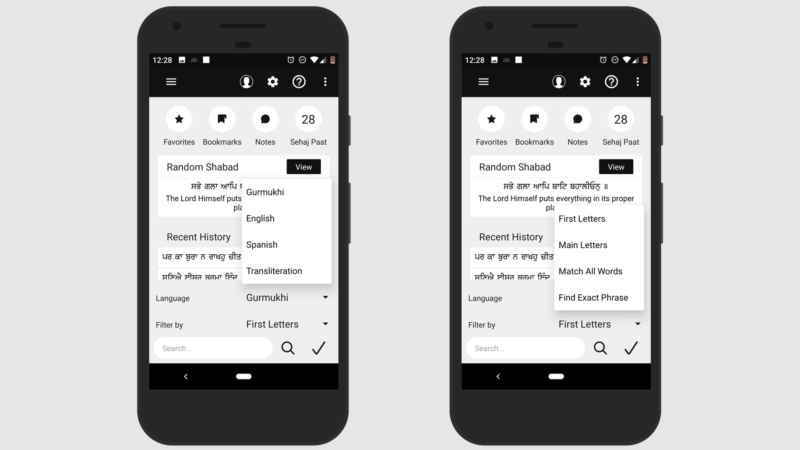
Search Options
The searching has now been simplified and you can search using Gurmukhi, English, Spanish or the Transliteration. Use First Letter, Main Letter, Match Words and Match Phrase options.
v1.6 now has an Auto-Search feature for Gurbani, so you do not need to change any options to search first letter, main letter or to do word searches. Simply type and the application will find what you are looking for.
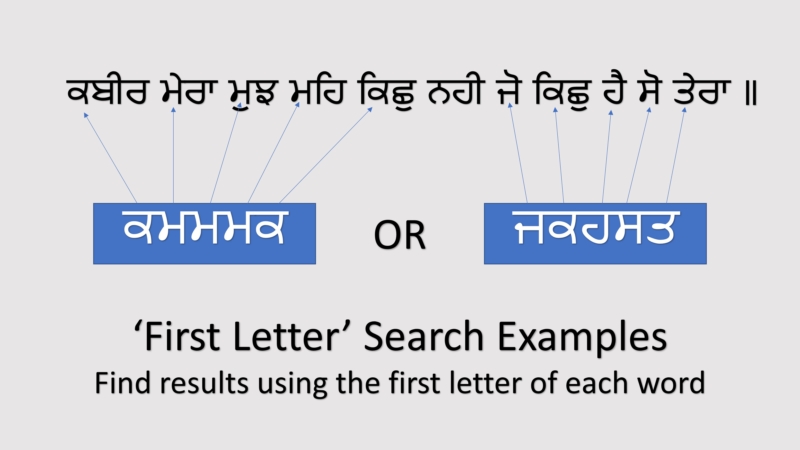
First Letter Searching
Use the First Letter searching option to find the Shabad by using the first letter of each word. The search results will bring back all results that have matching letters from the start of the Pangthi first, then it will bring back those that have the matching letters anywhere in the words.
First Letter searching was introduced by SikhiToTheMax in August 2000 and revolutionised how Shabads could be found in a live Keertan environment.
.
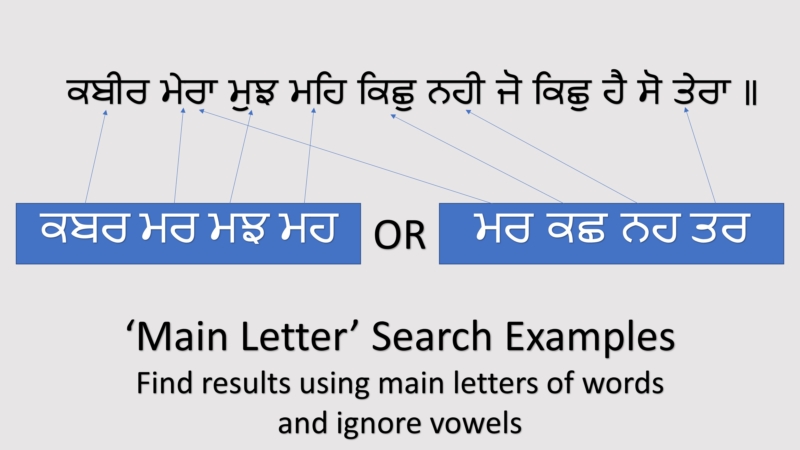
Main Letter Searching
Main Letter Searching is a very powerful way of finding Shabads. It uses only the letters to search and ignores any vowels (Siharee, Biharee and Lagamatraa) and only uses the main 30 letters of Gurmukhi. To use it, just type in the main letters of the words in the order that they appear in the Pangthee line. This is very useful if you cannot remember certain words in the Pangthee line as you can miss words and it will still find the Shabad.
Main Letter Searching was introduced many years ago in the STTM website and desktop application but it is a little known feature.
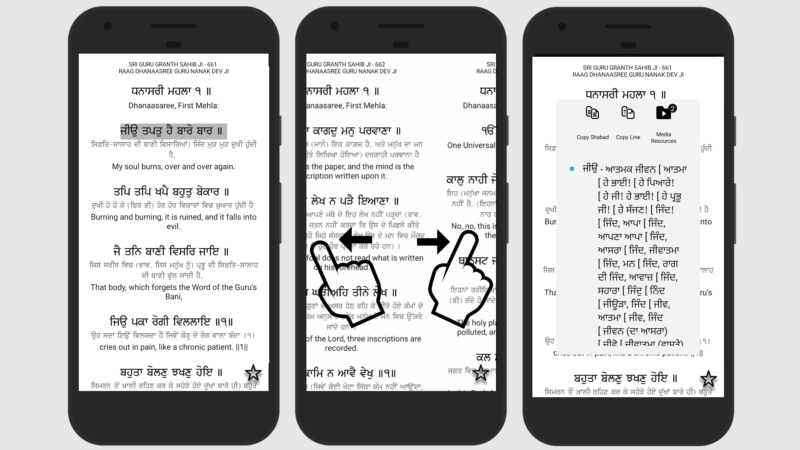
Shabad Navigation
Once you have found a Shabad you can use swiping to navigate to the next and previous Shabad. By long pressing on a Pangthee line you can view the dictionary words of that line from the various dictionaries in the application. You can also use the menu after you long press to copy a line or copy the Shabad to the clipboard to paste into documents or social media posts.
.
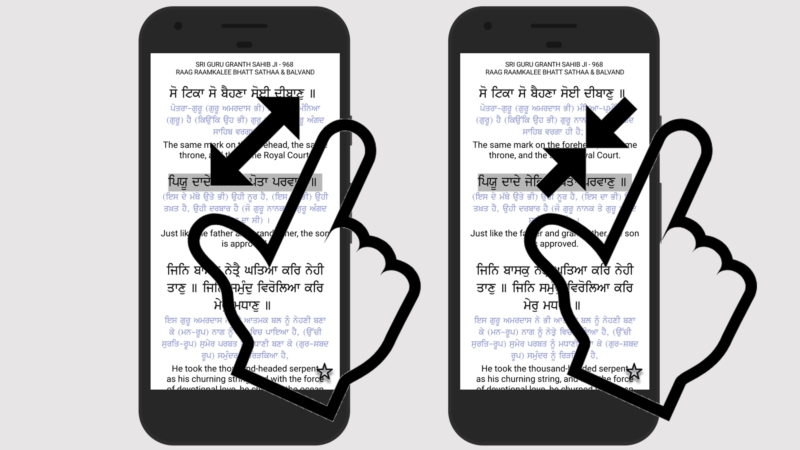
Resize Shabad Text
Use pinch gestures to increase and decrease font sizes. The application allows you to set different Shabad sizes for Search Results, Shabad View, Reading View, Sehaj Paat and for Presenting so you can customise each area depending on how you want to view it. You can also have different translations and other elements showing for each of these views. For instance, you can just show the Gurmukhi and the Reference in the Search results and make the font small, and show the Gurmukhi, English and Punjabi without the reference in the Shabad View with a larger font.
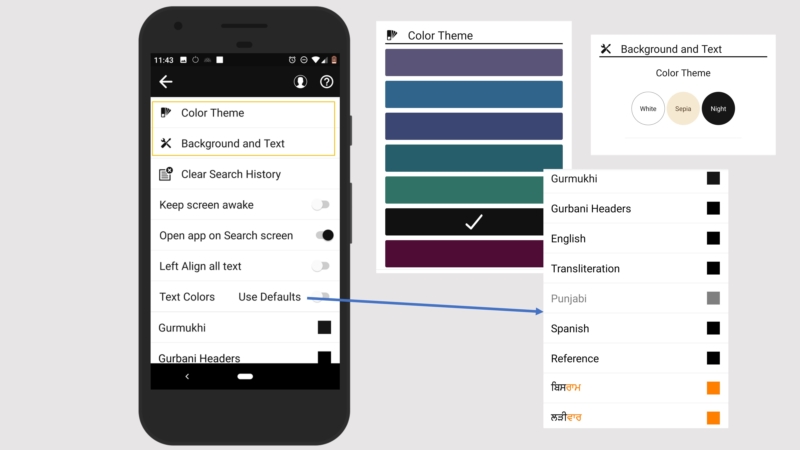
Colour Themes and Schemes
The colours used in the application are totally configurable. You can change the colour scheme of borders and the main menu. You can also change the background colour to dark, light or sepia. You can now also change the colour of the fonts for virtually all aspects of the view including the Gurmukhi, translations and things like the Larrevaar Assist and Bisraams.
.
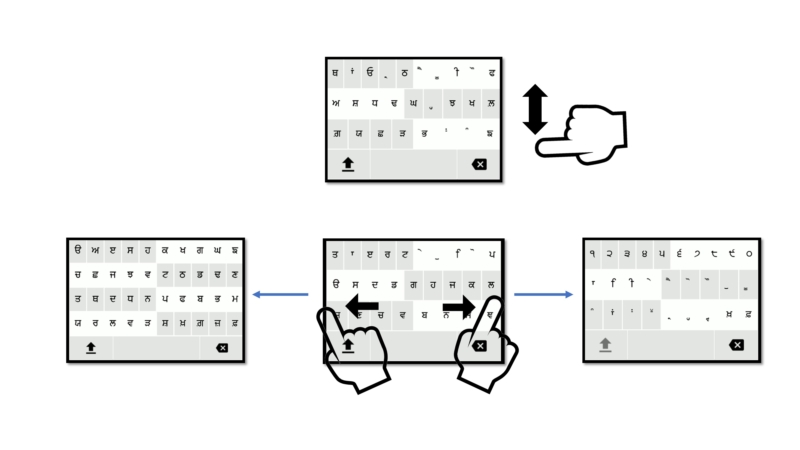
Unique Keyboard
The keyboard has been updated to make the keys bigger and easier to use. There are 3 different keyboard layouts that you can access by swiping left and right on the keyboard. So you can use the traditional 35 letter layout, the Qwerty layout or view number and vowels for easy access.
You can also swipe up and down which performs the Shift Up and Shift Down functions respectively.
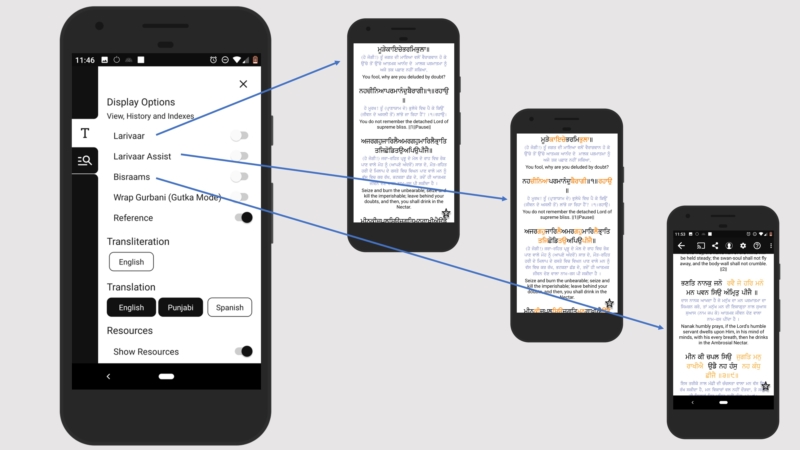
Menu Options
By swiping left to right you can access the view menu. You can also view it by tapping on the white space when viewing a Shabad and clicking on the 3 dots menu on the toolbar. This menu is used to change the current Shabad View. You can switch on Larreevaar, Larreevar Assist, Bisraams and other options such as showing translations and resources.
.
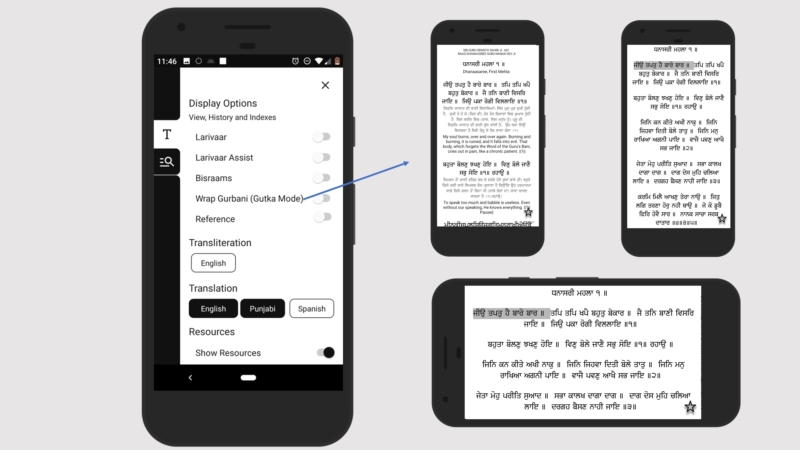
Gutka Mode (Wrap Gurbani)
You can now view Gurbani in Gutka mode which will group Pangthee lines together in Paurees and Rahao sections. It will also group the relevant translations together also. This view makes reading Gurbani along with translations more natural since the translations are written in this way rather than line by line.
Also when performing Keertan, it helps the Keertani sing the sections of the Shabad correctly by ensuring that all the grouped Pangthees are sung together. It also make the Shabad View very easy to read.
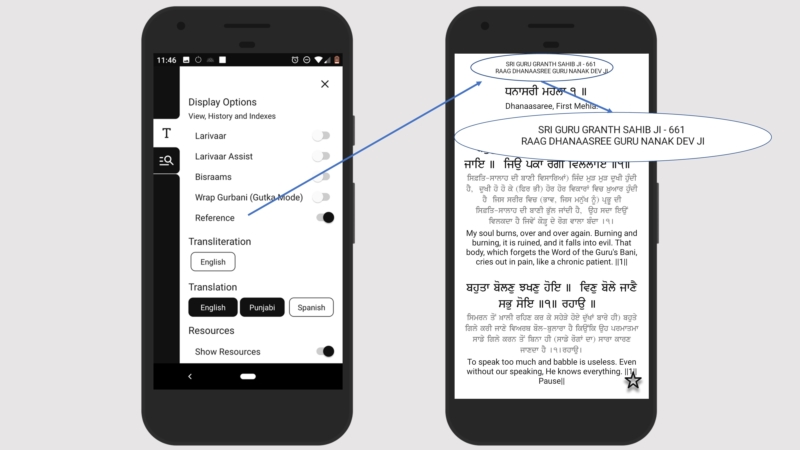
Show References
Use this option to show the Writer, the Raag, the Source and Ang at the beggining of each Shabad. You can show or hide any of these menu options on all of the different views. So you can show the References on Shabad View but can switch them off on Search Results and in Sehaj Paat view.
.
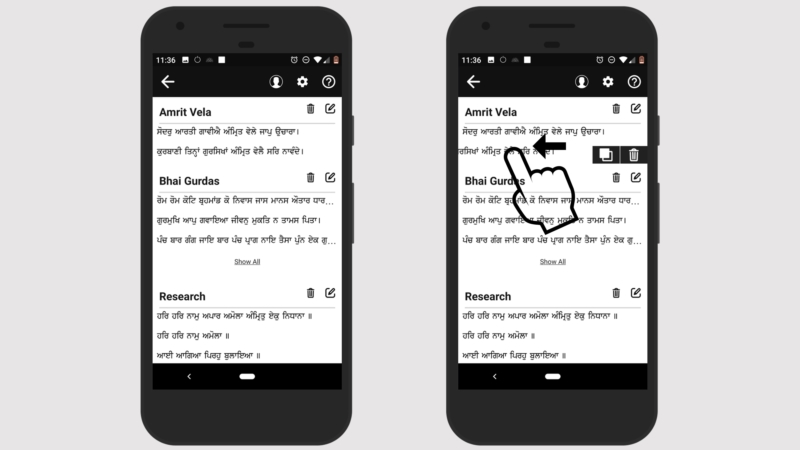
Favourites
You can add a Shabad to your Favourites by clicking on the “star” at the bottom right of the Shabad View. This will allow you to add it to an existing group or create a new group. To access your favourites, you can use the shortcut link on the search view or find Favourites under the Search section of the main screen.
When a Shabad is added to a Favourites group, you can remove it or copy it to another group by swiping left on it which will reveal these two menu options.
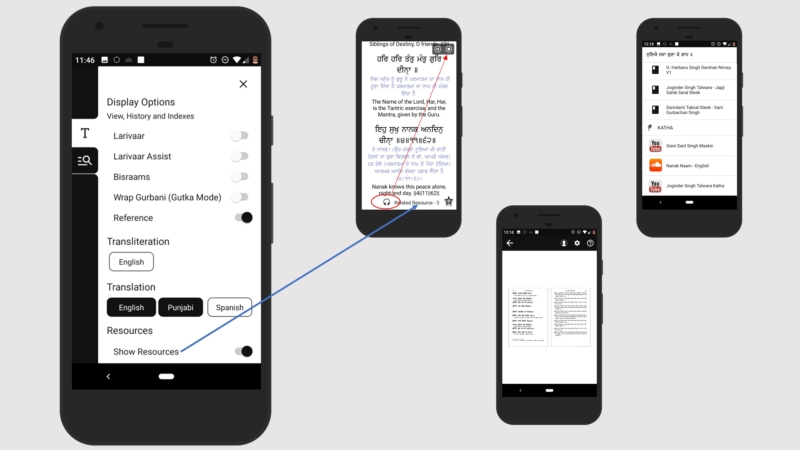
Show Resources
All Shabads have resources attached to them. These can be translations (Steeks), books, videos and audio. By switching on the “Show Resources” options each Shabad will display how many resources are attached to it. By clicking on the Headphones icon you can listen to the audio of the Shabad. When you play audio, the SikhiToTheMax Audio Player starts and you can pause and stop a Shabad using the player or by going to your notifications panel on your phone.
.
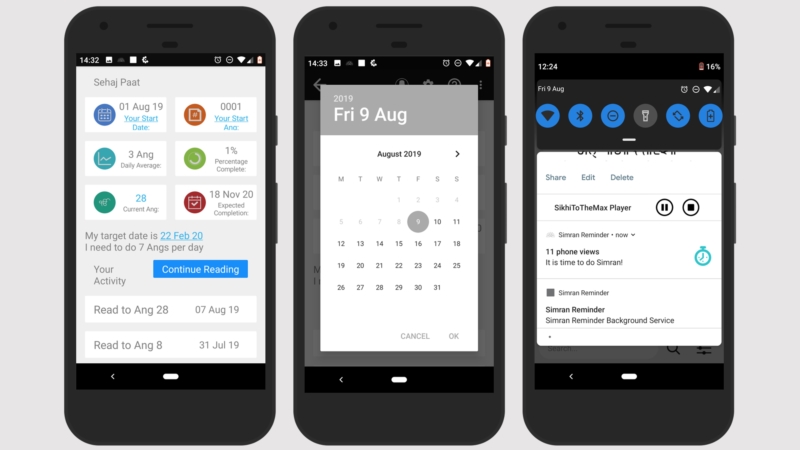
Sehaj Paat Feature
The SikhiToTheMax app now has a Sehaj Paat feature which lets you perform your own Sehaj Paat. You can bookmark and add notes to Shabad and colour code. You can also set a target date and the app will advise on how many Ang you need to read per day to meet the target. The dashboard gives you a prediction of when you will currently finish your Paat based on the Start Ang and the date that you started (both are editable by clicking on them).
One of the unique features is that you can play any Shabad in the Sehaj Paat by clicking on the headphone icon (switch on “Show Resources” first). The app will continue playing the Shabads until you hit stop on the menu or in the notifications bar. It will then update your current Ang depending on how much you listened to.
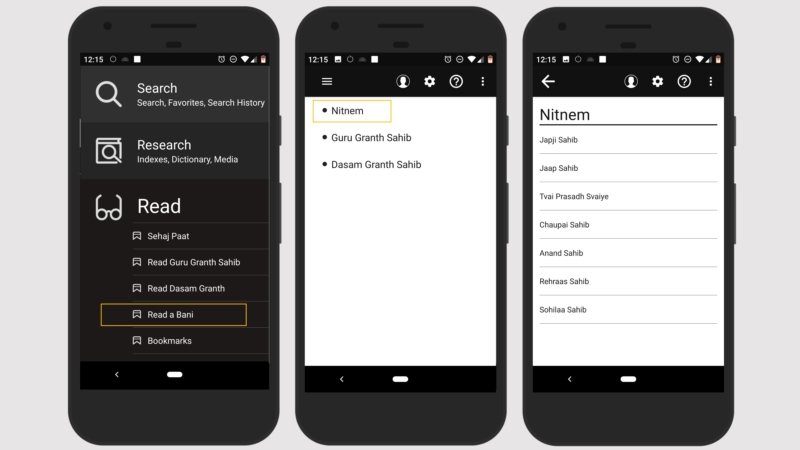
Read Nitnem and Bani
Read your Nitnem with all the powerful features of the application. Also read other Bani with the ability to listen and research further using resources and digging further with the dictionary. Also learn to read your Nitnem in Larreevaar using the additional functions.
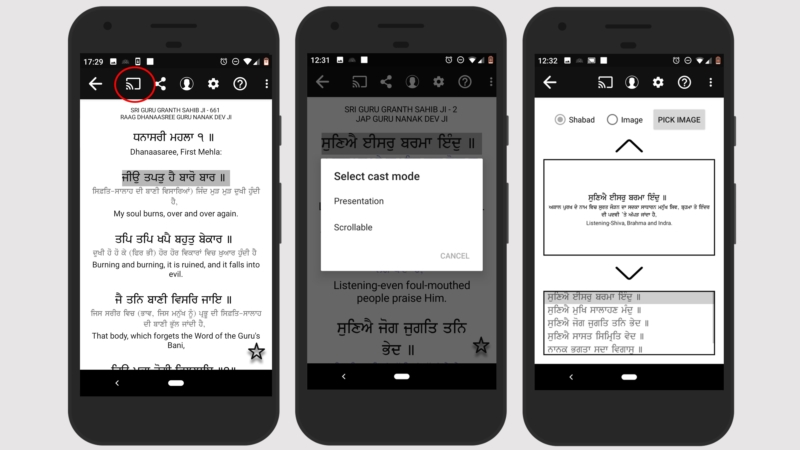
Chromecast Presentation
The app lets you cast your Shabad to Chromecast and you can view the Shabad in a scrolling mode or in presentation mode which is line by line. The app lets you select an image too so you can promote programmes in between Shabads when presenting and quickly switch back to the Shabad when ready.
Easily switch between Asa Kee Vaar and other Shabads by having the app running on more than one device and switching between them.
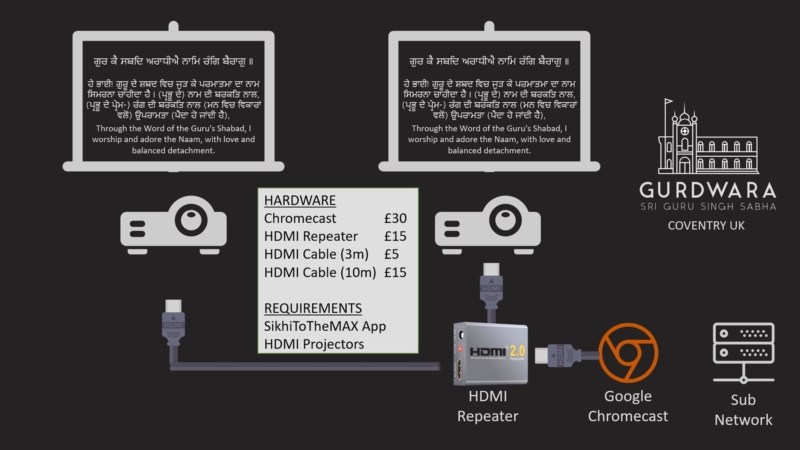
Complete Wireless Setup
Singh Sabha Gurdwara in Coventry has a fully wireless setup that uses the STTM app on mobiles to do all projections. The desktop version is used when broadcasting the translation on video streams. Use a hdmi repeater with a single Chromecast unit to project to two separate screens in the same hall. The safest and most secure way of doing this is to create a sub network and use it solely for the Chromecast network.
A team of presenters can use the app on their own phones and help find Shabads quickly and efficiently. Any notifications that are received on the phone are not presented on chromecast which keeps the presentations professional and clean.
